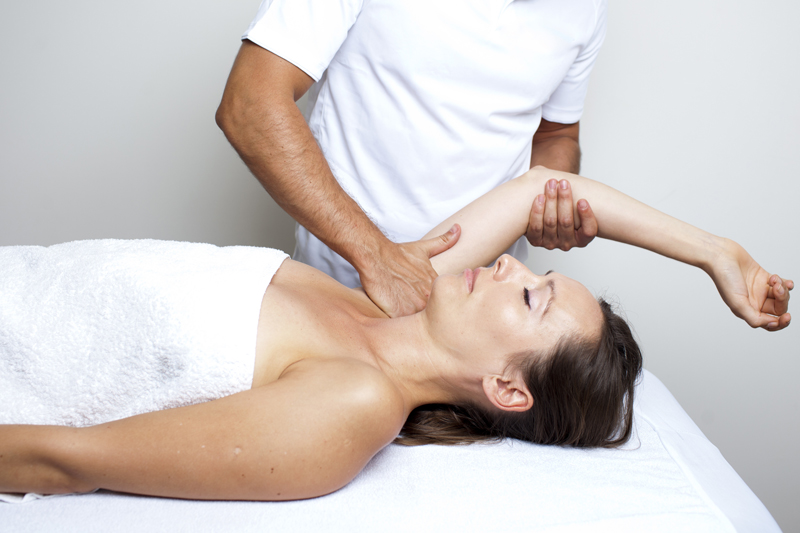With 20 years of experience and a wide variety of certifications in different modalities such as myofascial release, cranial sacral therapy, lymphatic drainage and others, I’ve treated over 30,000 people in the last 20 years. I originally became interested in massage therapy due to a car accident that happened to me about 22 years ago. I hurt my neck badly and it was recommended to me to fuse a couple of vertebrae which I decided against doing. I made the rounds trying different therapies; physical therapy, chiropractic care, and acupuncture, with no relief. Luckily, I found a massage therapist who did a treatment called myofascial release. After eight treatments, she completely relieved my problem with my neck.
We all know that massage is medicine for the body. Massage is primarily prescribed for medical or stress-related issues and the goal is to loosen and lengthen to strengthen. Overall, it is the therapeutic manipulation of the body’s soft tissue using a series of pressured movements to elicit muscular release. Massage reduces the body’s production of cytokines, which are specific proteins that contribute to inflammation due to injury or disease. Moreover, massage is known to stimulate the lymphatic system. The lymphatic system is a vital part of the immune system, and provides pathways for lymphocytes and other cells. When properly administered, massage also stimulates the mitochondria, which aid in cellular function and repair.
Biomechanical Bodywork
Not all massage is the same. Myofascial release (biomechanical bodywork) is a unique, intuitive, whole-body experience that will reconnect you with your body and ways of moving you had thought you lost. Through the symbiotic nature of massage and biomechanics, your awareness is heightened, which helps your body regulate to have you feeling relaxed, grounded, and positive when you walk out the door. Stretching is integrated with a unique sequence of massage strokes that allow for a spontaneous release of the body’s muscles, joints, tendons and ligaments. It is truly a customized approach, as every patient is different and the first concern is to root out where the “issue in the tissue” starts or stems from. It can be described as the wheels in a clock, all the separate parts have to fit comfortably with the ability to do their function; not compensate for others within the system. Therapists use their hands, elbows, forearms, knees, and even breath to administer a variety of motions applied both lightly and with firm pressure to elicit response in the muscles and fascia.
What Is Fascia?
The fascia is an underestimated but fundamentally needed asset of the body. Fascia is the membrane casing that surrounds muscles and other organs. It can be related to an elastic lining that encompasses the body similar to shrink wrap. Through Myofascial Release, therapists can prevent your “shrink wrap” from becoming too tight, reducing spasms and cramping in your muscle groups which then creates joint flexibility throughout the body. This helps to reduce recovery time for those who have been recently injured or who feel the after-effects of previous trauma and for those restricted of motion whether from injury or lifestyle.
Touching is a natural human response to pain and stress. Likewise, it is a universal gesture that non-verbally conveys compassion and support. All selected species instill from a young age that touching and contact are a means of connecting with another.
Anthony Hansen, LMT, founder of Therapy on the Gulf. We specialize in myofascial release, craniosacral therapy, and lympatic drainage. We do aromatherapy massage, pregnancy massage, and other types of massage and energy work. I am also a Qigong and Reiki Master. Candace VanRee, LMT and Teresa Kennedy, LMT are both highly qualified and do the same things that I do.
For further information, please feel free to call us at Therapy on the Gulf, 239-262-8722.
